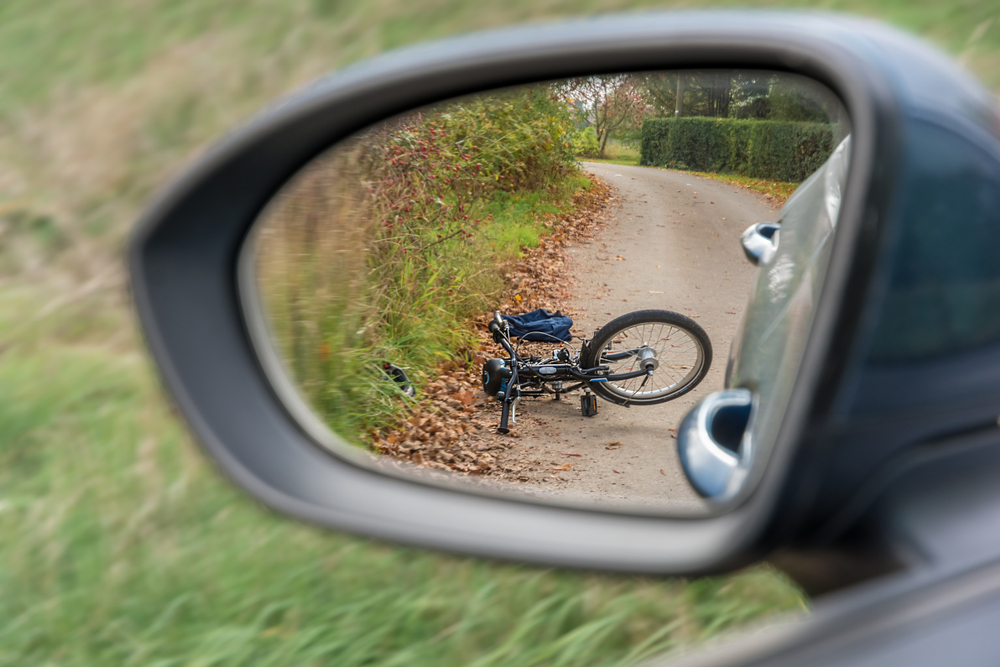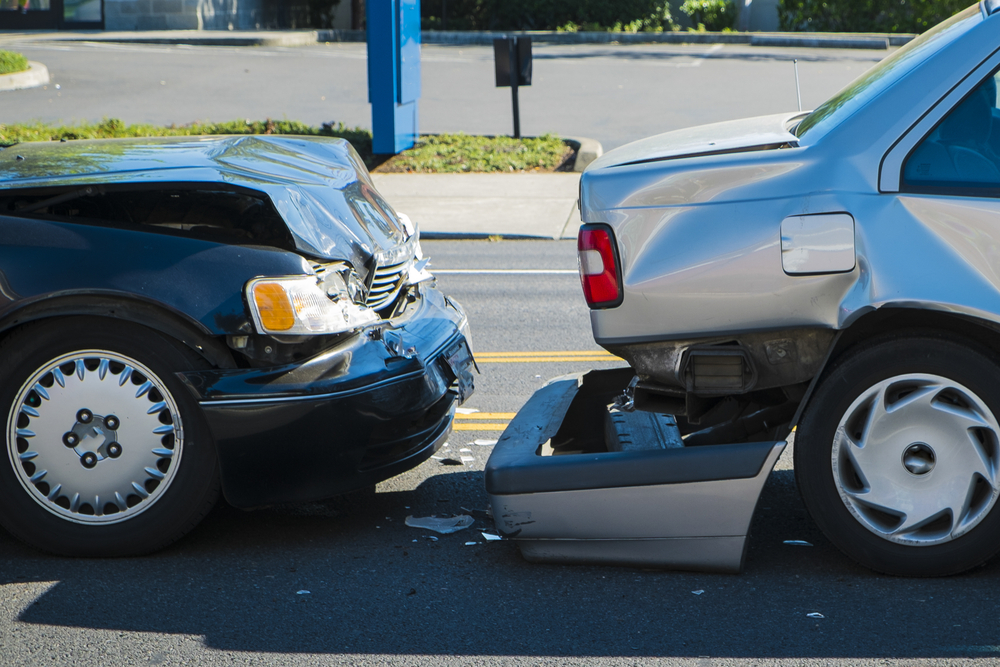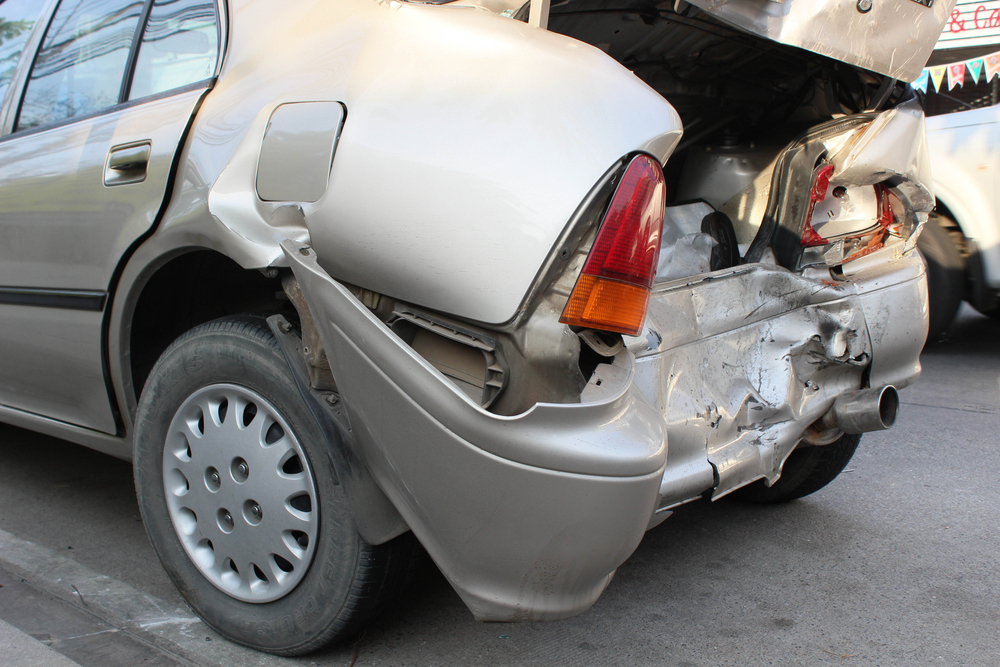Rear-end car accidents where another driver is negligent can lead to severe injuries, including soft tissue contusions, broken bones, and head injuries. In addition to seeking prompt medical treatment after a rear-end accident, you must consult a knowledgeable Edmonton car accident lawyer as quickly as possible. Your lawyer can investigate your case right away and pursue the financial recovery you deserve for your losses.
Essential Steps to Take after a Rear-end Collision

After seeking medical attention following a rear-end car crash, there are important steps to take in the aftermath to protect your well-being and potential legal claims. Those steps include all of the following:
- Follow All Recommended Medical Advice – Adhere to the treatment plan that your healthcare providers prescribe, attend all scheduled appointments, follow prescribed medications, and complete any recommended physical therapy or rehabilitation. This promotes your recovery and establishes a thorough record of your injuries.
- Monitor Your Health – Be vigilant about your health after the accident. If you experience any new or worsening symptoms, promptly seek medical attention. Document these developments as they may affect your personal injury case and the compensation you ultimately receive.
- Keep a Journal – Maintain a personal journal detailing your physical and emotional state post-accident. Note pain levels, challenges in daily activities, and any emotional distress you may be experiencing. This can serve as valuable evidence if you pursue a personal injury claim.
- Preserve All Available Evidence – Preserve evidence related to the accident, including photographs of the damage to your vehicle, the accident scene, and any visible injuries. If there were witnesses, obtain their contact information.
- Consult with a Car Accident Lawyer in Your Area – If you’re considering legal action, consult a local personal injury lawyer as soon as possible. They can provide guidance on your rights, assess the strength of your case, and navigate the complexities of the legal process.
- Understand Insurance Coverage – Familiarize yourself with your insurance coverage, especially uninsured/underinsured motorist coverage. This can be crucial if the at-fault driver is uninsured or lacks sufficient coverage to compensate you for your losses.
- Have Your Lawyer Notify Insurance Companies – Your lawyer should report the accident to both your insurance company and the at-fault driver’s insurer. They can provide the insurers with necessary details, such as the rear-end collision’s date, time, and location. Accident victims should be cautious when communicating with insurance companies directly, and they should refer the insurer to their lawyer for all future discussions or negotiations.
These steps can contribute to a smoother recovery process and strengthen your position when pursuing compensation for damages resulting from a rear-end car crash. Promptly seeking legal advice ensures you make informed decisions and safeguard your rights throughout the claims-filing and litigation processes.
Injuries in a Rear-end Collision
Victims of rear-end car collisions often experience a range of injuries, depending upon factors such as the speed of the crash, use of vehicle safety features, and individual health conditions. Some of the most common injuries include:
- Chest contusions
- Back injuries
- Whiplash
- Traumatic head and brain injuries
- Soft tissue injuries
- Internal organ injuries
- Bone fractures
Moreover, you should not overlook the emotional effects of a rear-end collision. Victims may suffer from post-traumatic stress disorder (PTSD), anxiety, or depression, mainly if the accident is severe.

It’s crucial for individuals involved in rear-end collisions to seek prompt medical attention, even if injuries seem minor initially. Some injuries may manifest or worsen over time, and early diagnosis and treatment can contribute to a smoother recovery. Additionally, thoroughly documenting injuries is vital when pursuing insurance claims or legal action to ensure fair compensation for the physical and emotional toll of the accident.
How do Rear-end Car Accidents Typically Occur?
Rear-end car collisions are a common type of accident, often resulting from various factors contributing to the rear driver’s inability to stop to avoid a collision. Some of the most frequent causes of rear-end car collisions include:
- Distracted driving
- Tailgating
- Speeding
- Sudden Stops
- Driving under the influence of alcohol or drugs (DUI)
Understanding these common causes emphasizes the importance of defensive driving, maintaining a safe following distance, and staying focused on the road. If you suffered injuries in a rear-end accident that resulted from another driver’s negligence, an experienced car accident lawyer in your area can promptly investigate your accident circumstances and file a personal injury claim seeking monetary recovery.
Where Are Rear-end Car Crashes Likely to Happen?
Rear-end car accidents can occur in various locations, but specific settings are more prone to this type of collision. Some of the most common places for rear-end car accidents include:
- Traffic signals at intersections
- Traffic jams and congested Roads
- Local highways and freeways
- Parking lots and garages
- Stop-and-Go Traffic on Surface Streets
Understanding the typical locations for rear-end car accidents highlights the need for heightened caution and defensive driving in these areas. Other drivers should maintain proper following distances, stay attentive, and adapt their driving behaviours to the specific challenges that different locations present.
Legal Elements of a Rear-end Car Crash Claim
A car accident claim or lawsuit involves specific legal elements that the injured accident victim must establish to recover monetary compensation for their injuries and damages. These elements are crucial for building a solid personal injury case:
- Legal Duty of Care – The injured accident victim must first demonstrate that the at-fault driver owed them a legal duty of care. In car accident cases, this duty is to drive responsibly and follow all prevailing traffic laws.
- Breach of Duty – The injured accident victim must also show that the rear driver breached their legal duty of care. This breach may involve speeding, running a red light, or engaging in negligent behaviour like inattentive driving.
- Causation – Establishing a direct (causal) link between the at-fault driver’s breach of duty and the injuries sustained is vital. The injuries must be a direct and proximate result of the other driver’s negligent actions or inactions.
- Proximate Cause – Proximate cause addresses whether the claimed injuries are a foreseeable consequence of the negligent driver’s actions. If the injuries are reasonably foreseeable based on the other driver’s conduct, it strengthens the case.
- Damages – The accident victim must also have suffered actual damages, including lost income, pain and suffering, and other losses. Documenting these damages is essential for proving a successful personal injury claim.
- Negligence or Fault – The accident victim must establish that the other driver’s negligence (or fault) was the primary cause of the subject accident. This involves demonstrating that the responsible driver’s actions deviated from what a reasonably prudent person would do under the same or similar circumstances.
Navigating these legal elements requires thorough investigation, documentation, and legal experience. Consulting with an experienced car accident lawyer near you is crucial to understanding your rights, assessing the strength of your case, and pursuing fair compensation after a rear-end car accident.
How Can a Lawyer Help After Your Rear-end Accident?
Engaging a lawyer after a rear-end car collision can be instrumental in navigating the complexities of legal processes and ensuring the best possible outcome in your case. Some of the key ways in which a lawyer can help include:
- Legal Experience – An experienced personal injury lawyer brings a deep understanding of relevant laws and regulations. They can assess the specifics of your case, determine liability, and guide you on the legal avenues available to pursue favourable monetary compensation for your losses.
- Evidence Gathering – Lawyers are adept at collecting and preserving crucial evidence following a car crash. This includes obtaining accident reports, gathering witness statements, analyzing medical records, and documenting the scene. Strong evidence can significantly bolster your case.
- Insurance Company Negotiations – Dealing with insurance companies can be challenging. Experienced lawyers understand insurers’ tactics and can negotiate on your behalf to secure fair compensation. They also know how to evaluate settlement offers and determine whether they adequately cover your accident-related losses.
- Legal Strategy – An effective legal strategy is essential in personal injury cases. Lawyers can assess the strengths and weaknesses of your case, anticipate potential challenges, and develop a strategy tailored to your specific needs and circumstances.
- Representation in Court – A lawyer can represent you in court if settlement negotiations fail. They have the legal experience to present your case, cross-examine witnesses, and argue on your behalf. This is crucial for pursuing maximum compensation in a formal legal setting.
- Medical Expertise – Personal injury lawyers often work with medical experts who can provide professional opinions on the extent of your injuries, treatment plans, and long-term effects. This experience strengthens your case when demonstrating the severity of your injuries.
- Statute of Limitations Compliance – Finally, legal professionals understand the importance of adhering to statutes of limitations. They can file your lawsuit within the prescribed time frame, preventing potential dismissal due to missed deadlines.
Retaining an experienced personal injury lawyer after a rear-end car collision provides valuable support in navigating the legal landscape, advocating for your rights, and pursuing fair compensation. Their experience and guidance can significantly enhance your chances of a favourable outcome in your personal injury claim or lawsuit.
Types of Damages You May Recover after a Rear-end Accident
After a rear-end car accident, victims may be entitled to recover various damages, including economic, non-economic, and, in certain cases, punitive damages. Understanding these categories is essential for seeking fair compensation.
Economic Damages

- Lost income – If you cannot work for some time following your rear-end accident, you may be eligible to recover compensation for your lost earnings by introducing your pay stubs, employment records, or other financial documents as evidence in your case.
- Loss of earning capacity – If your accident-related injuries prevent you from continuing your employment and you have to switch jobs and take a pay cut, you may be entitled to recover compensation for your loss of earning capacity.
Non-Economic Damages
- Pain and Suffering – Non-economic damages address the physical and emotional distress the accident victim experienced due to a rear-end accident and encompass pain, anxiety, stress, and diminished quality of life.
- Emotional Distress – Accident victims may seek monetary compensation for emotional harm resulting from their accident, including anxiety, depression, or post-traumatic stress disorder (PTSD).
- Loss of Consortium – This type of damage compensates for the accident’s negative effects on relationships, including the loss of companionship, support, or intimacy with a spouse or family member.
Punitive Damages
- Deterrence and Punishment – Punitive damages aim to punish the at-fault party for particularly reckless or egregious behaviour, acting as a deterrent to prevent similar conduct in the future.
- Limited Availability – Not all car accident cases qualify for punitive damages. They are typically available in instances of extreme negligence or intentional misconduct.
- Demonstrating Gross Negligence – To secure punitive damages, the injured party must demonstrate that the at-fault party’s actions were not just negligent but exhibited a conscious disregard for the safety of others.
Recovering economic damages is relatively straightforward, often involving calculating specific costs. Non-economic damages, on the other hand, are more subjective and may require the presentation of evidence to establish the overall effects of the rear-end accident on the victim’s life.
While less common, punitive damages can significantly increase the overall compensation in cases where the at-fault party’s conduct was exceptionally reprehensible.
Seeking legal advice is crucial in understanding the types of damages applicable to your specific situation and maximizing the compensation you recover after a rear-end accident. An experienced car accident lawyer near you can address the legal complexities, build a robust case, and pursue fair reparation for the full extent of your losses.

Speak to a Local Car Accident Lawyer Right Away About Your Legal Matter
Upon suffering injuries in a rear-end car accident, you need an experienced lawyer on your side to advocate for you every step of the way. A knowledgeable and compassionate Edmonton personal injury lawyer can handle every step of the process for you, negotiate with the insurance adjuster on your behalf, or litigate your case through the court system to a favourable and efficient resolution.
Never simply wonder what you can do following a rear-end collision. Instead, take proactive steps to get medical treatment and seek a free legal consultation with a car accident lawyer. They can guide you on what to do next.
